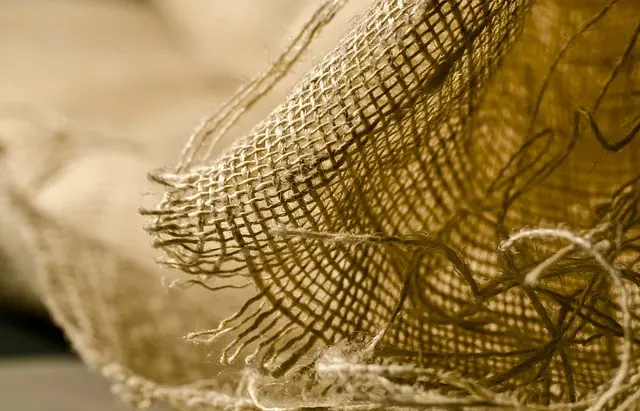The Mitragyna speciosa, commonly known as the kratom tree, is an evergreen native to Southeast Asia with leaves containing alkaloids like mitraphylline and 7-hydroxymitragynine. These compounds can provide analgesic effects by interacting with opioid receptors in the body, potentially aiding muscle recovery and pain relief. Kratom supplements are used for this purpose, with strains such as Maeng Da and Bali being particularly popular due to their potent properties. It's essential to use kratom cautiously, considering its effects on health and interactions with other medications, and to consult healthcare professionals before use, especially for those with underlying health issues. When using kratom for muscle soreness, it should be part of a holistic recovery regimen that includes proper hydration, nutrition, and rest. For those interested in the tree's appearance, the kratom tree is characterized by its broad leaves and evergreen foliage, with white flowers resembling a bishop's mitre. Understanding the tree's characteristics is important for appreciating this natural wellness resource and ensuring safe and effective use of its supplement form.
Explore the natural path to muscle soreness relief with kratom supplements, a topic that intertwines the therapeutic properties of this Southeast Asian evergreen tree with modern wellness practices. Known scientifically as Mitragyna speciosa, the kratom tree’s leaves have long been utilized for their potential pain-relieving effects. This article delves into understanding the kratom plant, its role in easing muscle discomfort, and practical strategies for integrating it into your recovery regimen. Discover how these supplements can complement your wellness routine and contribute to robust muscle health.
- Understanding the Kratom Tree and Its Role in Muscle Soreness Relief
- Effective Strategies for Alleviating Muscle Soreness with Kratom Supplements
- Integrating Kratom into Your Wellness Routine for Optimal Muscle Recovery
Understanding the Kratom Tree and Its Role in Muscle Soreness Relief

The kratom tree, scientifically known as Mitragyna speciosa, is an evergreen tree indigenous to Southeast Asia, particularly Thailand, Indonesia, and Malaysia. Its leaves are the source of the plant’s well-documented effects due to the alkaloids they contain, namely mitraphylline and 7-hydroxymitragynine, among others. These compounds are believed to interact with the body’s opioid receptors, which may contribute to its analgesic properties. The tree itself can grow up to 80 feet in height and possesses a complex structure of branches and veins, much like other members of the Rubiaceae family. Its leaves are broad and leathery, with a primary vein that runs from the base to the tip, dividing into secondary veins, providing a distinctive appearance often associated with its identity.
For those experiencing muscle soreness, kratom supplements have been explored as a potential natural remedy. The active alkaloids within the kratom leaf are thought to influence pain perception and muscle relaxation by binding to the mu-opioid receptors in the brain. This interaction may help alleviate discomfort associated with muscle soreness, including that caused by intense physical activity or chronic conditions. Users often report a sense of relief and reduced stiffness after ingesting kratom, particularly strains such as Maeng Da or Bali, which are known for their pain-relieving effects. However, it is crucial to approach the use of kratom supplements with caution, as their efficacy and safety remain subjects of ongoing research and regulatory scrutiny. Users should consult healthcare professionals before incorporating kratom into their wellness regimen, especially if they have pre-existing health conditions or are taking other medications.
Effective Strategies for Alleviating Muscle Soreness with Kratom Supplements

Muscle soreness, often a result of intense physical activity or exercise, can be alleviated through natural supplements such as kratom. Kratom, derived from the leaves of the Mitragyna speciosa tree native to Southeast Asia, has been traditionally used in this region for its therapeutic properties. For those curious about the appearance of the kratom tree, it bears evergreen broad-leaved foliage, and its scientific name reflects the characteristic shape of its white flowers that resemble a bishop’s mitre. When it comes to muscle soreness relief, kratom supplements can be particularly effective due to their active alkaloids, such as mitragynine and 7-hydroxymitragynine, which are believed to interact with the body’s opioid receptors, providing pain relief and reducing inflammation.
To effectively use kratom for muscle soreness, it’s important to understand the appropriate strains and dosages. Strains like Maeng Da and Bali are commonly recommended for their analgesic effects. It is advisable to start with a lower dose to gauge individual sensitivity, as the effects can vary widely among users. Additionally, combining kratom with other recovery strategies, such as proper hydration, adequate rest, and a balanced diet, can enhance its efficacy in managing muscle soreness. Users should also be mindful of their overall health and consult with healthcare professionals before integrating kratom into their regimen, especially if they are taking other medications or have pre-existing conditions. Proper dosing and responsible use are key to ensuring that kratom serves as a beneficial tool for muscle soreness relief.
Integrating Kratom into Your Wellness Routine for Optimal Muscle Recovery

When considering the integration of Kratom into your wellness routine for optimal muscle recovery, it’s beneficial to understand the origins and characteristics of the Kratom tree. Scientifically known as Mitragyna speciosa, the Kratom tree is indigenous to Southeast Asia and belongs to the Rubiaceae coffee family. Its leaves, which contain a variety of alkaloids such as mitraphylline and 7-hydroxymitragynine, are responsible for its medicinal properties. These alkaloids can influence pain perception, mood enhancement, and muscle relaxation, making Kratom a potential natural aid in muscle recovery processes.
To effectively incorporate Kratom into your wellness regimen, it’s crucial to approach its use with both caution and informed intention. For muscle soreness relief, certain strains like the Maeng Da or Bali are often favored due to their balancing effects on the body. It’s advisable to start with a low dose to gauge your body’s response, as individual sensitivities vary. Additionally, Kratom should be used in conjunction with other recovery strategies such as adequate hydration, proper nutrition, and ample rest to ensure a holistic approach to muscle health. Always consult with healthcare professionals before introducing any new supplement into your routine, especially if you have pre-existing conditions or are taking other medications. By doing so, you can harness the potential benefits of Kratom while minimizing risks and promoting effective muscle recovery.
Muscle soreness can be an impediment to maintaining an active lifestyle, yet nature provides potential solutions through the kratom tree, a subject of increasing interest due to its role in muscle recovery. This article has explored the kratom tree’s appearance and its traditional uses, delving into how kratom supplements might serve as effective strategies for alleviating muscle soreness. Furthermore, we discussed integrating kratom into a wellness routine for optimized muscle recovery. While more research is needed to fully understand the efficacy and safety of kratom, the insights provided offer a promising look at how this plant might support athletic performance and overall health. As always, it’s crucial to consult with healthcare professionals before incorporating any new supplement into your wellness regimen.






